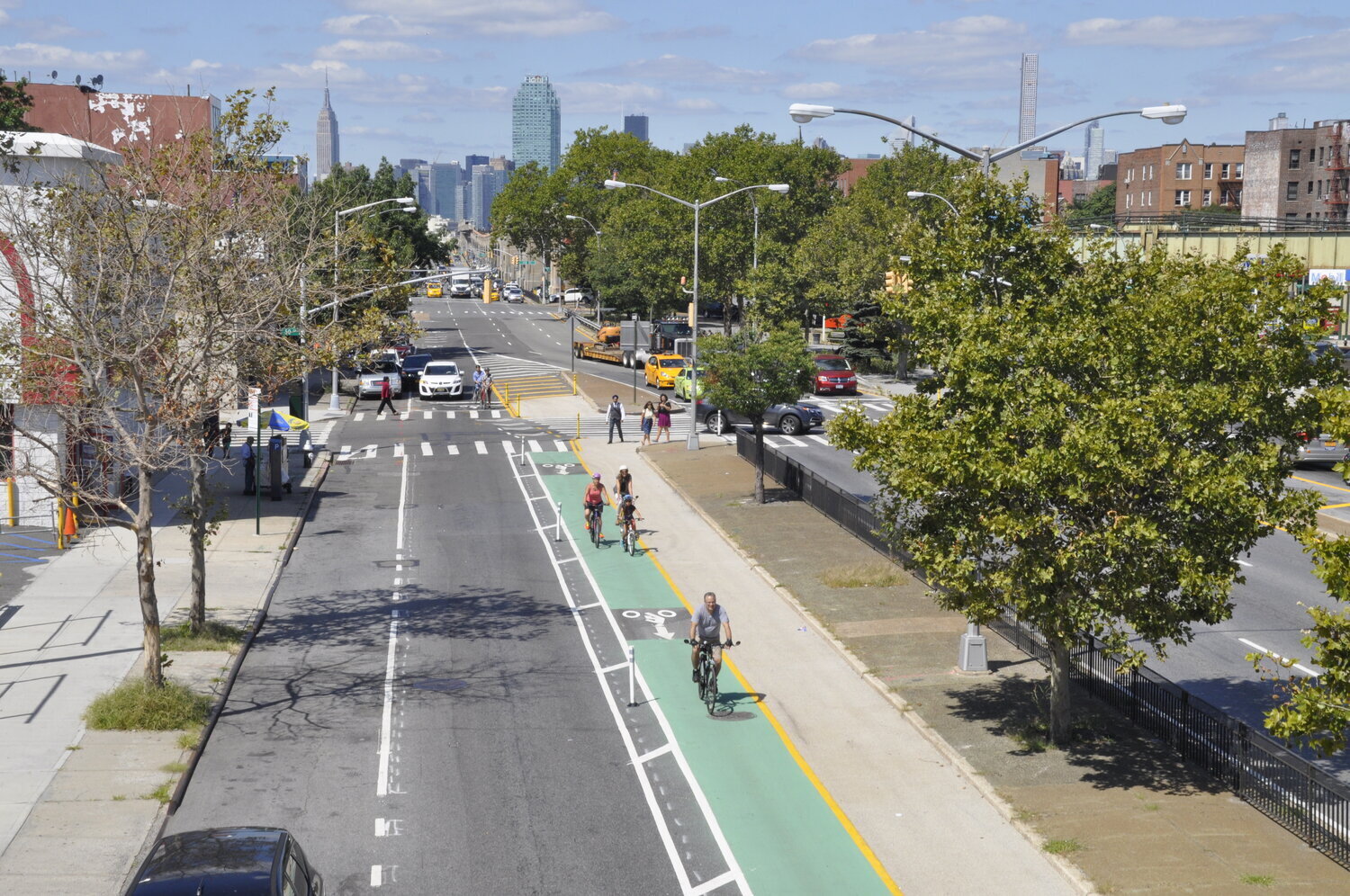DOT begins construction on final stretch of Queens Blvd. bike lane
/The Department of Transportation has started construction on Phase 4 of the Queens Boulevard bike lane.
Photo via DOT
By Jacob Kaye
The Department of Transportation has begun construction on the long-delayed final 1.2 mile stretch of the Queens Boulevard bike lane in Forest Hills, the agency announced last week.
The new bike lanes will run on Queens Boulevard from Yellowstone Boulevard to Union Turnpike and will complete the partial bike network along the corridor often referred to as “The Boulevard of Death.”
In addition to the bike infrastructure, the DOT is building several other safety features along the stretch of road, including a pedestrian path between the service road and main roadway, new crosswalks, elongated left-turn bays, new truck loading zones and additional parking in commercial areas near Ascan Avenue and Austin Street.
Construction is expected to be completed by November.
“Bicycle riding is a fun, healthy, and environmentally-friendly activity that we in government should be doing our utmost to encourage,” said Queens Borough President Donovan Richards. “The best thing we can do to promote bicycling is to create conditions where cyclists can ride safely and confidently throughout our city.”
Mayor Bill de Blasio announced that construction would begin on Phase 4 of the Queens Boulevard bike lane project back in May, during his week-long safe streets policy week.
Phase 4 of the bike lane was supposed to begin in 2018 but was put on hold until 2020.
Just as quickly as the project’s gears began to move, it was halted again when concerns were raised by City Councilmember Karen Koslowitz, who proposed an alternative plan that the mayor said he would take into consideration.
Koslowitz said she was concerned about losing too many parking spaces along the corridor – the changes are expected to eliminate around 220 parking spots.
Ultimately, de Blasio said Koslowitz’s plan didn’t make the cut when he announced the resumption of the project earlier this year.
“The city needs more bike lanes to accommodate today’s cyclists and the anticipated expansion of future cycling,” Koslowitz said in May. “While I am pleased that the city is moving forward with the extension of bike lanes on Queens Blvd., I am disappointed that the Phase IV plan does not protect cyclists, nor does it minimize the loss of parking spaces. The objective of protecting cyclists while minimizing the loss of parking spaces has been accomplished in other parts of the city.”
Koslowitz’s office did not respond to request for comment for this story.
Queens Boulevard has long been known as one of the deadliest streets for pedestrians and cyclists in all of the city.
From 1993 to 2000, around 10 pedestrians were killed per year trying to cross Queens Boulevard.
There was a stretch of time, however, when deaths along the boulevard were almost non-existent. Toward the beginning of Mayor Bill de Blasio’s Vision Zero initiative, not a single pedestrian or cyclist was killed along Queens Boulevard from 2014 until 2017.
There have been several deaths along the roadway since then. Most recently, Jaipaul Persaud was killed in March when crossing Queens Boulevard at 84th Drive, StreetsBlog reported. The intersection where Persaud was killed is not a part of Queens Boulevard affected by the safety changes made by the city.




